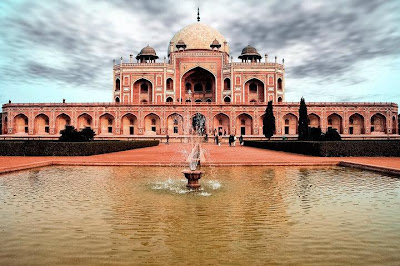The Tomb of Emperor Humayun (1570 AD). Nizamuddin East, New Delhi

Built by Haji Begum, the widow of Mughal Emperor Humanyun in 1570. Humayun's Tomb in Delhi, the first garden-tomb in the Indian subcontinent, had teased the architectural novelty that Taj Mahal finally gave shape to. This tomb in New Delhi was built by Haji Begum, the Persian widow of Humanyun, at a cost of Rs 1.5 million through 8 years. A complex of buildings displaying Mughal architecture in Nizamuddin East, it consists of the main tomb of the Emperor Humayun as well as several others, including the Barber's Tomb. Mughal emperor Humayan, was not able to rule for a long time as he met with his untimely death after he falling from the stairs of the Sher Mandal library. Sayyed Muhammad ibn Mirak Ghiyathuddin and his father Mirak Ghiyathuddin brought in from ...




